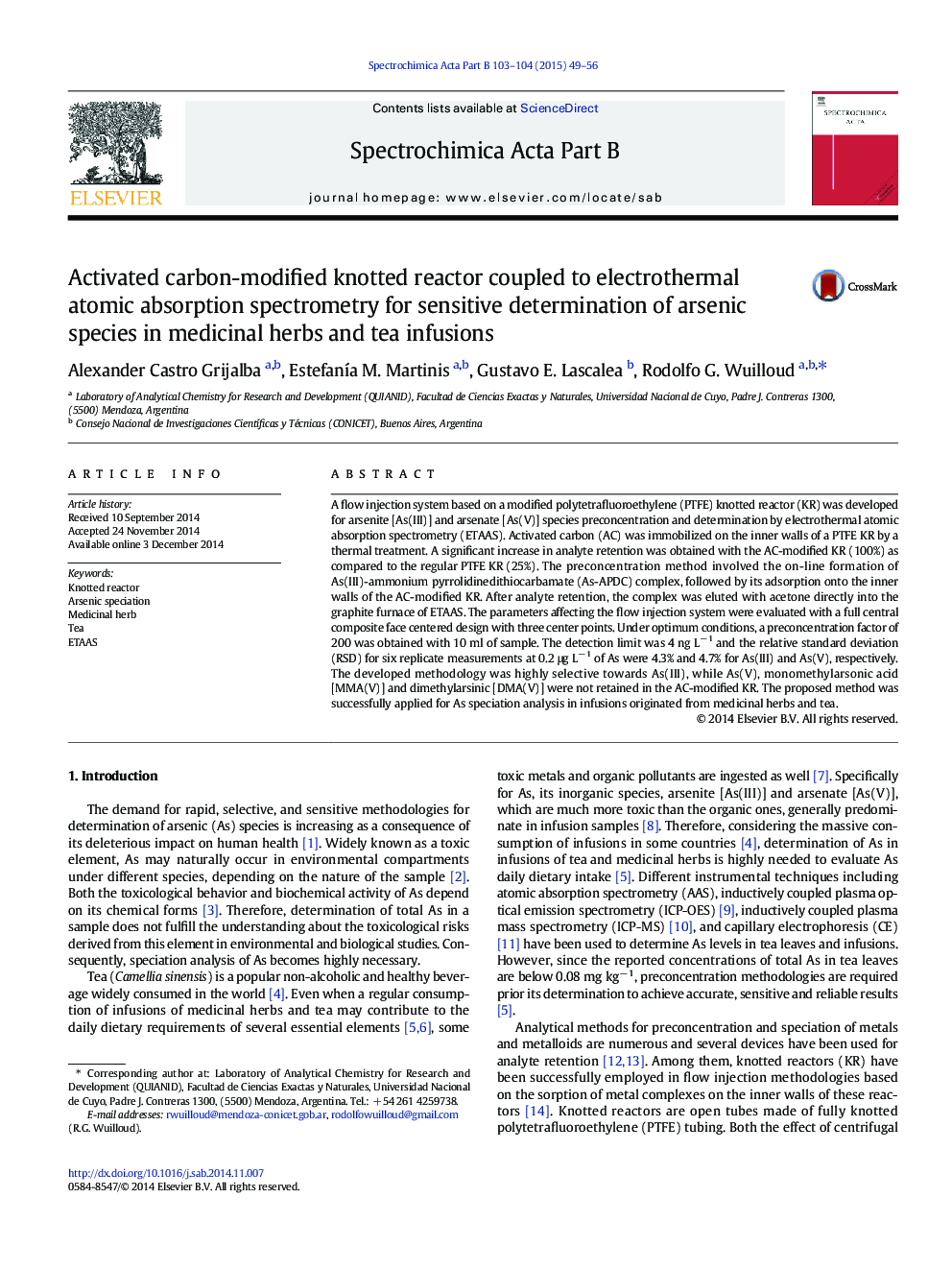| Article ID | Journal | Published Year | Pages | File Type |
|---|---|---|---|---|
| 1240130 | Spectrochimica Acta Part B: Atomic Spectroscopy | 2015 | 8 Pages |
•We report an efficient method for As speciation.•We have modified a knotted reactor with activated carbon for high sorption capacity.•We provide a simple procedure for surface modification of a PTFE knotted reactor.•We have selectively separated inorganic As species from complex matrix samples.•We have implemented a modified KR in a flow injection system coupled to ETAAS.
A flow injection system based on a modified polytetrafluoroethylene (PTFE) knotted reactor (KR) was developed for arsenite [As(III)] and arsenate [As(V)] species preconcentration and determination by electrothermal atomic absorption spectrometry (ETAAS). Activated carbon (AC) was immobilized on the inner walls of a PTFE KR by a thermal treatment. A significant increase in analyte retention was obtained with the AC-modified KR (100%) as compared to the regular PTFE KR (25%). The preconcentration method involved the on-line formation of As(III)-ammonium pyrrolidinedithiocarbamate (As-APDC) complex, followed by its adsorption onto the inner walls of the AC-modified KR. After analyte retention, the complex was eluted with acetone directly into the graphite furnace of ETAAS. The parameters affecting the flow injection system were evaluated with a full central composite face centered design with three center points. Under optimum conditions, a preconcentration factor of 200 was obtained with 10 ml of sample. The detection limit was 4 ng L− 1 and the relative standard deviation (RSD) for six replicate measurements at 0.2 μg L− 1 of As were 4.3% and 4.7% for As(III) and As(V), respectively. The developed methodology was highly selective towards As(III), while As(V), monomethylarsonic acid [MMA(V)] and dimethylarsinic [DMA(V)] were not retained in the AC-modified KR. The proposed method was successfully applied for As speciation analysis in infusions originated from medicinal herbs and tea.
